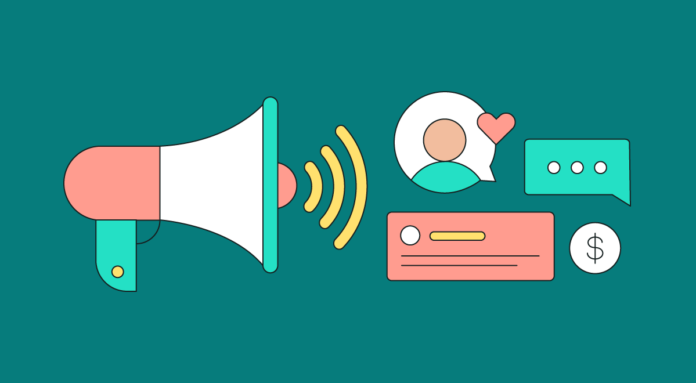Marketing 4.0 is a new vision of marketing: more inclusive, personalized, and effective. This type of marketing is a formidable asset in your inbound marketing strategy. Author Philip Kotler used this term for the first time in 2017. This new era of digital marketing follows 3 generations of processes spanning from marketing 1.0 to 3.0. Here, four objectives: define and contextualize marketing 4.0, before presenting its advantages and advice for use.
In 2017, Philip Kotler popularized the term in his book “Marketing 4.0”, in which he discusses the exponential evolution of marketing. Indeed, traditional media are increasingly giving way to digital media. However, Marketing 4.0 combines the best of both worlds: traditional marketing and digital marketing. Thus, influencing purchases and developing sales requires a good ghost writing understanding of consumer behavior.
Contact us to study consumer behavior.
This marketing approach is distinguished by the use of new digital technologies. Data is increasingly required in the analysis phase. Also, assertiveness increases, including with the use of artificial intelligence and robotics in actions.
Marketing 4.0 uses techniques such as Big Data, CRM, and automated marketing.
Characteristics of Marketing 4.0
Its characteristics are distinct and disruptive:
- Make way for the 5As: The old “4Ps” of the marketing mix is supplemented by the “5As”: Aware, Appeal, Ask, Act, and Advocate. These new metrics imply that the customer is interested in many brands. In concrete terms, he obtains information on the Internet, proceeds to the act of purchase, before giving his opinion on his customer experience. This is the main contribution of marketing 4.0.
- Multi-channel journey: The customer journey is facing unprecedented change, especially with the advent of digital. From now on, the products are available online before being purchased in-store. It is also possible to go to the store before having it delivered to your home.
- Ultra-connectivity: Here, we anticipate customer requests before the purchase process. We then seek to establish a long-term relationship with a multi-channel marketing approach. This includes inbound marketing, emails, targeted advertising, or social media. In addition, brands seek to involve their customers in the life of their business (Jira, A. et al., 2012).
How did we go from Marketing 1.0 to Marketing 3.0?
Marketing 4.0 and its many characteristics are the consequence of a strong evolution in marketing practices. Here we introduce you to the main aspects of marketing 1.0, 2.0, and 3.0.
Marketing 1.0
Marketing 1.0 comes from the industrial revolution and had its peak with that of Fordism. Here, consumers had little choice in front of them; also, there was a little rivalry between the companies. Therefore, companies focused on their own products and production.
By producing ever more goods, commercial structures had only one objective in mind: to sell more. So customization was strictly limited, in favor of productivism. In short, the consumer occupied only a secondary place in the minds of companies.
Marketing 2.0
It was only with Marketing 2.0 that companies began to personalize their advertising messages. The effect is immediate: advertising campaigns immediately become more impactful. In question, consumer expectations became increasingly important. We are then witnessing the emergence of brand images as a tool of differentiation.
Appearing in the 1990s, marketing 2.0 refocuses on the consumer to establish new marketing fundamentals, based on customer satisfaction and loyalty. The offer is therefore constructed according to the needs of prospects.
Marketing 3.0
The major change brought about by marketing 3.0 lies in its segmentation, which is more efficient and fairer. Its use of digital technologies is a harbinger of the emergence of Marketing 4.0. Advertising persuasion techniques are perceived as less intrusive than traditional advertising. Finally, it is thanks to marketing 3.0 that the first content strategies are emerging.
Also, two types of marketing have arisen through this new process:
- Attraction marketing: offering relevant product information to increase your conversion rate
- Experiential marketing: arousing strong emotions to create a link between the prospect and the brand
What are the 6 benefits of Marketing 4.0?
Marketing 4.0 has made the commercial world accessible to everyone. In truth, any business can advertise through digital channels. This grants them many benefits, listed below:
Finally, we share with you 3 best practices before embarking on marketing 4.0. On the agenda: e-reputation, traditional vs. digital and personalized advertising.
Dedicate time to e-reputation management
The influence of opinion is one of the main criteria for the success (or failure) of 4.0 marketing campaigns. Today, every voice can be expressed on social networks. So, it is advisable to learn about e-reputation management. Knowing what to do in a crisis can be key to maintaining a healthy brand image.
In short, a follow-up of positive and negative comments allows you to gauge the nature of your reputation. The most important indicator for measuring customer loyalty remains the propensity to defend the brand, a true role of the ambassador.
Reconcile traditional and digital processes
When Philip Kotler, the authoritative author among his peers, talks about Marketing 4.0, he’s not talking about erasing the past. On the contrary, this marketing process is only the sum of all the best practices acquired over the decades regarding consumer needs.
Marketing 4.0 above all advances the idea of a multi-channel presence. Being able to sell your products/services on physical and digital channels is proof of sound business of Medical Ghostwriter. Currently, there is no better way to increase engagement and embellish your brand image.
Design targeted and captivating advertising campaigns
Finally, Marketing 4.0 faces a big challenge. Indeed, capturing attention and arousing strong emotions is proving complicated for consumers who are increasingly exposed to advertising. It is an essential stopover on the way to building trust between customers and brands.
To do this, targeting remains a major attraction for reaching new customers. This 4.0 marketing strategy makes it possible to seek out prospects who recognize themselves in the message conveyed by the brands. The key to success for brands: sharing essential values in the eyes of their targets.



